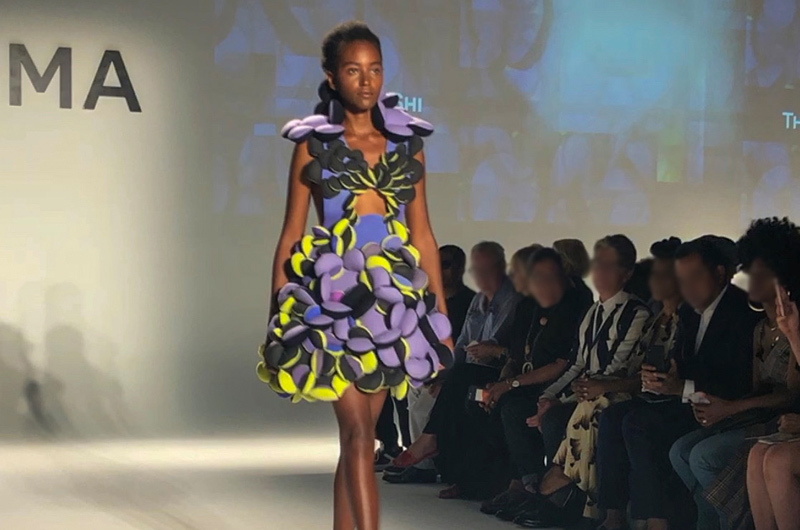It’s clear that cotton has grown up and evolved from tried-and-true classic staples like T-shirts and denim jeans. The U.S. cotton garments that came down the runway at Pier59 Studios during New York Fashion Week included a silky-smooth coral crochet dress, an ethereal peach gown studded with futuristic 3D flowers and black and white poplin turned into an avant-garde jumpsuit. Innovation has transformed cotton in inspiring ways.
After the Supima Design Competition runway show, I caught up with Fern Mallis, the creator of New York Fashion Week and the former executive director of the Council of Fashion Designers of America (CFDA) and got her take on innovation in cotton.
“If you’re really clever and creative you can do everything with cotton,” Mallis says. “You know, people are always redefining cotton and reinventing the way it’s used. It’s fiber that everybody wants to wear so everybody’s working to make it useful in many different ways beyond T-shirts and jeans. I’m seeing cotton used in ways I didn’t think was possible.”
At the show, U.S. cotton-rich garments were mistaken for silk, suede and synthetic fibers. Fashion designers dyed cotton in the sun, scalloped it, shredded it and turned it into velvet. The winning designer even interlocked cotton fabric without traditional sewing so that the garment could be taken apart and the pieces could be reconstructed into a whole new style, which she likened to playing with Legos.
If cotton is being used in ways that surprise Mallis, who seemingly has seen it all in fashion as a premier fixture on the global fashion scene for the last three decades, then innovation has infiltrated cotton fashion design.
The chair of the Fashion Design Department at the Fashion Institute of Technology (FIT), Eileen Karp, says that innovation with cotton is starting with the myriad ways up-and-coming designers are using cotton in the classrooms.
“We use cotton a lot—we start in the first semester and use it for draping classes as well as sewing, then we move into more advanced semesters and our students experiment all the time with sustainable applications and sustainable types of dyeing,” Karp says.
She adds that the Fashion Design Department students also work in collaboration with the FIT Textile Development and Marketing Department (TDM) on a denim capstone project in which they learn the whole process of developing an all cotton collection, starting with a visit to one of the 18,600 family cotton farms in the United States.
Inspiring the fashion industry to explore how U.S. cotton can be used in so many different ways can impact the clothing that brands create and retailers will sell, as well as the ways in which consumers view cotton clothing.
Lili Shi, a student from the Fashion Institute of Technology and the Supima 2018 Design Competition winner, says she enjoys working with U.S. cotton fabric and will continue to use U.S. cotton in her collections.
“I always love natural fabric because it just feels better,” Shi says. “It’s really smooth and fine; it’s different than other cottons I can buy. You can do so many things with it.”
The great thing about cotton is it will always be an effortless fabric made from a natural fiber that was grown from a plant, even if it’s able to morph into a garment that has the performance capabilities of synthetic fibers and the artistic elements of haute couture.
Written by: Jenn Sarter
Senior Marketing Manager, Cotton Council International


